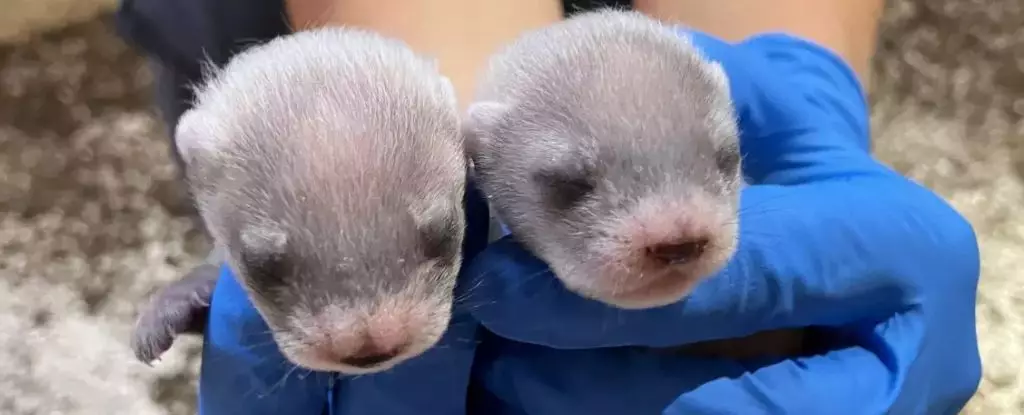The tale of the black-footed ferret, once presumed extinct, serves as both a beacon of hope and a cautionary tale in conservation biology. In 1979, the black-footed ferret (Mustela nigripes) was declared extinct, with no living specimens reported. Fast forward four decades, and a groundbreaking breakthrough has emerged: scientists successfully cloned the species. This leap in scientific endeavor resulted in the birth of two healthy pups—one male and one female—by Antonia, a ferret cloned from the last known wild survivor, Willa, who passed away in 1988 at the San Diego Zoo. This remarkable achievement ignites discussions not only about the potential of cloning technologies but also the broader implications for species recovery and conservation efforts.
The return of the black-footed ferret from the brink of extinction is attributed largely to a captive breeding program initiated in 1981. This initiative stemmed from the capture of just 18 wild ferrets in Wyoming, all belonging to an inbred population. The genetic heritage of these animals posed significant challenges, leading scientists to recognize the critical need for genetic diversity. Antonia, already breaking through genetic barriers, possesses genetic variations three times greater than the average wild ferret. According to a press release from the U.S. Fish and Wildlife Service, integrating such genetic diversity is paramount to the long-term recovery of the species.
However, while the successful reproduction of a cloned endangered species marks a significant milestone in conservation genetic research, it also raises many questions. Cloning could theoretically bolster the genetic pool available for breeding, but the overwhelming challenges faced by black-footed ferrets in their natural habitat remain largely unaddressed. Factors such as disease susceptibility, habitat destruction, and prey depletion threaten the survival of this species, even with a more diverse genetic profile.
Critics of cloning initiatives, including prominent wildlife ecologist David Jachowski, emphasize that habitat degradation primarily drives species towards extinction. Cloning efforts, despite their promise, can only go so far in addressing the root causes of endangerment. The black-footed ferret’s habitat has significantly diminished due to agricultural expansion, necessitating an urgent focus on the conservation of shortgrass prairie ecosystems. Without substantial changes to these habitats, the success of cloning initiatives may be futile, leaving cloned animals without a suitable environment for survival.
Using cloning technology as a bandage to heal the wounds of habitat loss may distract from the essential conservation work needed to ensure ecosystems remain intact. Instead of merely attempting to replicate extinct or endangered species, conservation strategies must pivot back to preserving and restoring the environments where these creatures once thrived.
The collaborative effort involving the U.S. Fish and Wildlife Service, the Smithsonian National Zoo, and various organizations exemplifies innovation in conservation. However, the essence of sustainable wildlife recovery lies in the harmonization of technological advancements like cloning with traditional conservation efforts. As we embrace these scientific achievements, it is crucial to ground our expectations in ecological realities. The challenges facing the black-footed ferret—and endangered species globally—stem from complex interactions among habitat loss, human encroachment, and climate change.
While Antonia and her offspring stand as symbols of hope, they also remind us of the nuanced paths we must tread. We are at a crossroads where future conservation successes hinge on applying cutting-edge technology in concert with foundational ecological principles. The balance between embracing advancements in cloning and painstakingly nurturing habitats that foster the survival of species in the wild is what will ultimately determine the fate of not just the black-footed ferret, but numerous endangered species around the globe.
As we herald the replicative triumph of the black-footed ferret, let us also commit to addressing the profound challenges of conserving their natural ecosystems. The future of these animals in the wild may depend not merely on scientific ingenuity but on a renewed commitment to ecological restoration.

Leave a Reply